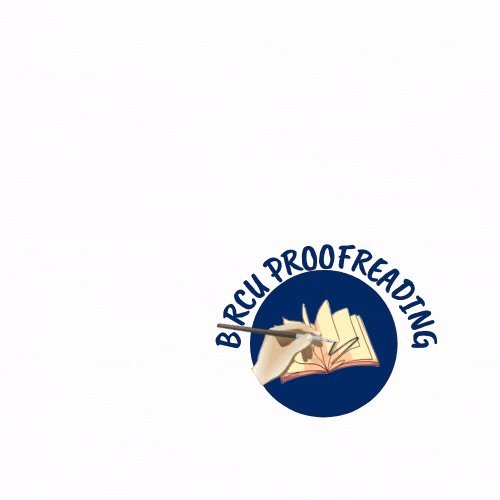Marketing of New Party-Political Towards the 2024 Election Winning Strategy of the Indonesian People's Wave Party
Abstract
The general election in the State of Indonesia is held before the term of office of the previous official runs out, which is 5 years. Every 5 years the people of Indonesia will hold elections to choose their leader. In 2019, Indonesia held simultaneous elections, namely legislative elections and presidential-vice presidential elections, but there were several new polemics that occurred at that time, namely Law No. 7 of 2017 which states that the pair of presidential and vice-presidential candidates must be supported by at least 20% of dpr officials or 25% of the votes of the entire Indonesian people. This is set as a condition to determine whether or not the candidates for the presidential and vice-presidential candidates in the general election. In addition, there are regulations regarding the threshold of minimum party votes or Parliamentary Threshold of 4% of the vote for political parties can occupy the seat of the House of Representatives. So, this research is more likely to discuss how new political parties in Indonesia such as the Indonesian Gelora Party in conducting political manufer to be able to pass the parliamentary threshold in the 2024 election. The purpose of this study is to observe what the Indonesian Gelora Party has done and will do in order to pass the parliamentary threshold and win the 2024 legislative elections, and apply the concept of political marketing in order to win the Indonesian Gelora Party in the 2024 general election, by getting votes above the parliamentary threshold. This research uses qualitative methods with a case study approach. Techniques in collecting data are observation and in-depth interviews. The results of the research obtained show that the Indonesian Gelora Party as a new party has conducted massive political marketing by offering its platform as a political product in the form of a big narrative of the Indonesian nation towards the world's top five. Public appreciation of the consistency attitude of the Indonesian Gelora Party is seen from when Gelora faced the reality of plurality of religious relations with the State, relations between tribes, ethnicities that smell of politics, relations between groups with diverse forces and with the State.
Keywords
Full Text:
PDFReferences
Abdelbaset M. Alkhawaldeh et al., 2016). An Empirical Study in Voting Behaviour and Political Brand. International Business Management, 10(18), 4365-4372.
Adman Nursal. 2004. Political Marketing: Strategies to Win Elections: A New Approach to the Dpr Election Campaign. DPD, President. Gramedia Main Library. Jakarta
Alwie, A.F. (2011). Political Marketing and the Decision to Choose Regional Head Election Participants in Urban and Suburban Groups (Study of Political Participants in Pekan Baru City) (Unpublished Dissertation). PDIM FEB Universitas Brawijaya, Malang.
Anwar, Sanusi. 2014. Business Research Methodology. Jakarta: Salemba Four
Arofah & Nugrahajati, 2014). Political Marketing Conducted by Legislative Candidates in Indonesia: Study of Public Transportation as Transit Media in Medan on Presidential Election 2014. Procedia - Social and Behavioral Sciences, 155, 153–158.
Asmuni, et al. (2020). Implementation of the principle of sale and purchase transactions through MLM in Brand Branch (BC) PT. Herba Penawar Alwahida Indonesia (HPAI) Tanjungbalai. Budapest International Research and Critics Institute-Journal (BIRCI-Journal) Volume 3, No. 4, Page: 3376-3385
Assael, H. (1995). Consumer behavior and marketing action. Cincinnati, Ohio, South-Western College.
Bagong, Suyanto and Sutinah. 2006. Social Research Methods of Various Alternative Approaches. Jakarta: Prenada Media Group
Cangara Hafied, 2009. Political Communication, Concepts, Theories and Strategies. Jakarta. Press Eagle
Conceptualizing et al., 2011). Marketing Politic to Voters: Late Deciders in the 1992 Britis Election. European Journal of Marketing. P.135 – 146.
Creswell, John W. 2016. Research Design: Qualitative, Quantitative and Mixed Method Approach. Fourth Edition (First Print). Yogyakarta: Student Library
Denzin, Norman K & Yvonna S Lincoln. (2009). Handbook of Qualitative Research. Yogyakarta: Student Library
Drucker, P.F. (1974), “The Practice of Management”, New York: Harper & Row.
Effing et al., 2017. Social media and political participation: are Facebook, Twitter and YouTube democratizing our political systems? In International conference on electronic participation (pp. 25-35). Springer, Berlin, Heidelberg.
Emzir. (2011). Qualitative Research Methodology of Data Analysis. Jakarta :P T Raja Grafindo Persada Pusat
Firmanzah, 2008. Managing political parties: Communication and positioning of political ideology in the democratic era, Yayasan Obor Indonesia, Jakarta.
Firmanzah, 2012. Political Marketing Between Understanding and Reality. Jakarta: Yayasan Obor Indonesia
Guzmán & Sierra, 2009). A political candidate’s brand image scale: Are political candidates’ brands? Journal of Brand Management, 17(3), 207- 217.
Harrop, 2001). Political marketing – An investigation of the political marketing concept and political market orientation in Australian politics. European Journal of Marketing, 35(9/10), 1003-1025
Hay, 2003. Digital campaigning. In R. Miller (Ed.), New Zealand government & politics (5th ed.) (pp. 312-325). Victoria: Oxford University Press.
Henneberg, 2008). Epistimological perspective research in political marketing. Journal of Political Marketing Vol 7 P 151-182.
Issn, 2017. "The Influence of Positioning, Differentiation and Brand Image on The Decision to Purchase a Million Dollar Dream Book with Promotion as An Intervening Variable". WIDYA Ekonomika Scientific Journal, Mercu Buana University, Vol.1 No.2.
Jain et al., 2015). Information technology revolution and transition marketing strategies of political parties: Analysis through AHP. Business Information Systems, 20(1), 71–94.
Less-Marshment, J. 2001a. Political Marketing and British Political Parties: The Party's Just Begun. Manchester: Manchester University Press
Lincoln, Yvonna S & Egon G. Guba. 1985. Naturalistic Inquiry. California: Sage
Marland & Giasson, 2013). Investigating Political Marketing Using Mixed Method: The Case for Campaign Spending Data. Journal of Public Affairs, 13 (4), 391–402.
Marlizar, et al. (2020). The Role of Market Orientation and Creativity in Affecting the Marketing Performance of Market Traders in Aceh Market Banda Aceh City. Budapest International Research and Critics Institute-Journal (BIRCI-Journal).P. 1114-1127
Miles, M.B. & Huberman, M. (1992). Qualitative Data Analysis. Jakarta: Publisher of the University of Indonesia.
Newman, 2002), “The role of marketing in politics”, Journal of Political Marketing, Vol. 1, pp. 1-5.
Newman, B. (1994) The Marketing of The President: Political Marketing as Campaign Strategy. Thousand Oaks CA: Sage
Niffenegger, 1989). Strategies for Success from Political Marketers. Journal of Consumer Marketing, 6(1), 115–151.
Nursal Adman 2004. Political Marketing Winning Strategy: Elections A New Approach to the Presidential DPD DPR Election Campaign. Jakarta: Gramedia Pustaka Utama.
Peter, J.P. & Olson, J.C. (1999). Consumer Behavior Consumer Marketing, Vol. 30, No. 10/11, pp.45-51
Robert A. Dahl. Polyarchy: participation and Opposition. (New Haven: Yale University Press.1991)
Romdonny, J., Rosmadi, M. L. N. (2019). Factors Affecting Customer Loyalty in Products. Budapest International Research and Critics Institute-Journal (BIRCI-Journal) Volume 2, No 1, Page: 337-343
Safiullah et al., 2017). Social media as an upcoming tool for political marketing effectiveness. Asia Pacific Management Review, 22(1), 10–15. doi: 10.1016/j.apmrv.2016.10.007.
Sandra, 2013) . Jokowi's Political Branding During the 2012 Dki Jakarta Governor Election Campaign on Twitter. Communication Science Study Program, Petra Christian University Surabaya.
Shama, 1976). The Marketing of Political Marketing. European Journal of Marketing, 35(9/10), 1047–1057
Singh, 2018). Marketing management (15th ed.). England: Pearson
Slutsky, 2014). A Little Bit Nasty, Some of the Time: Mixed Strategy Equilibria in Political Campaigns with Continuous Negativity.
Smith & Clark, 1928). Principle of Marketing. Engelwood Cliffs: Prentice Hall International Inc. A Division of Simoon and Scuster
Solihah, 2018) . Simultaneous National Elections 2019. Accessed, http://www.rumahpemilu.com/public/doc/2015_02_06_01_35_09_ EXECUTIVE SUMMARY OF SIMULTANEOUS ELECTIONS 2019.pdf
Solomon, M. R. (2004). Consumer Behavior, Buying, Having and Being (6th ed.). Pearson Prentice Hall. Education International
Stanton, W.J. (1994), Fundamentals of Marketing, 10th Ed. Tokyo: Kogakusha, McGraw-Hill Book Company.
Sugiyono, 2016) . Quantitative, Qualitative and R&D Research Methods. Bandung: Alfabeta.
Sutisna. 2002. Consumer Behavior & Marketing Communications. Bandung: PT. Rosdakarya Teen
Yousif & ALsamydai, 2012), “The Impact of the Political Promotion via Facebook on Individuals’ Political Orientations”, International Journal of Business and Management, 7(10), pp.85-98.
Zeithaml, 1988). Consumer Perceptions of Price, Quality, and Value: A Means-End Model and Synthesis of Evidence. Journal of Marketing, 52(3), 2-22.
DOI: https://doi.org/10.33258/birci.v5i2.5281
Article Metrics
Abstract view : 66 timesPDF - 24 times
Refbacks
- There are currently no refbacks.

This work is licensed under a Creative Commons Attribution-ShareAlike 4.0 International License.

This work is licensed under a Creative Commons Attribution-ShareAlike 4.0 International License.

_.gif)

















_.gif)



